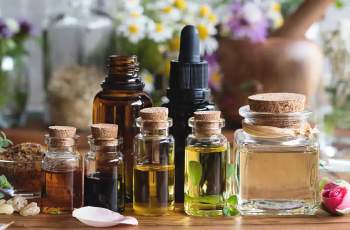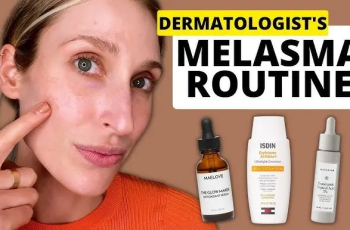
Is Double Moisturising the Answer to Beating Dull Winter Skin?
As I sit bundled up next to a heater, fingers nearly frozen from a cold breeze sneaking through an open window, I can’t help but think we put our skin through a punishing cycle in winter.
We’re constantly demanding our skin to adapt from icy outdoor winds to dry indoor heating, asking it to stay smooth, hydrated, and radiant all at once—quite the balancing act.
One minute it’s enduring bitter cold, the next it’s blasted by central heating, and somehow we still expect it to look dewy, supple, and selfie-ready at all times.
Is it any wonder that our usual moisturisers might not be cutting it anymore, especially when our skin is crying out for more TLC during the colder months?
Which brings us to the question making the rounds in skincare circles and TikTok threads alike: Is double moisturising the trick to glowing skin when the mercury drops?
Let’s explore what double moisturising really is, why it might be the winter hero your skincare routine needs, and how to actually do it right for your skin type.
What Exactly Is Double Moisturising, and Why Is It Trending?
Double moisturising is the technique of layering two moisturising products—usually one with humectant properties and another with occlusive benefits—to lock in maximum hydration.
It originated in skincare-savvy cultures like Japan and Korea, where multi-step skincare routines are the norm, and preventing moisture loss is a high priority in skin maintenance.
If double cleansing and double shampooing have become regular habits for many, then why not double moisturising, especially when hydration is the foundation of healthy-looking skin?
Unlike simply slathering on more of the same cream, double moisturising is about layering two different types of hydrators that play unique roles in skin nourishment and repair.
The first layer hydrates the skin deeply by drawing in moisture from the environment or deeper skin layers, while the second layer traps that moisture and prevents it from escaping.
This two-step method helps keep skin plump, bouncy, and visibly smooth, even when the cold air outside and dry heating indoors are working overtime to dehydrate your face.
Breaking Down the Two Key Players: Humectants and Occlusives
Humectants are ingredients that attract water to the skin like a magnet, helping to keep skin hydrated from the inside out and preventing that tight, dry feeling you get post-shower.
Common humectants include hyaluronic acid, glycerin, aloe vera, panthenol, and urea—lightweight, fast-absorbing ingredients that give an instant hit of hydration to thirsty skin.
On the other side, occlusives are thicker, richer ingredients that form a barrier on the skin’s surface, sealing in all the moisture and stopping it from evaporating into the dry air.
Examples of occlusives include shea butter, lanolin, squalane, petrolatum, and various plant oils that provide a longer-lasting moisturising effect while defending against the elements.
Layering a humectant first and then following with an occlusive product helps you lock in hydration for hours, keeping your skin resilient, soft, and healthy-looking throughout the day.
Think of it like a sandwich—hydration is the filling, and your second moisturiser is the bread that holds it all together and keeps the good stuff from slipping away.
How to Double Moisturise the Right Way (Without Getting Greasy)
The key to double moisturising is using the right products in the correct order, starting with a hydrating base and sealing it with something richer, without overwhelming your skin.
After cleansing and toning, apply a humectant-rich serum or gel—look for one that includes hyaluronic acid, glycerin, or a hydration-boosting blend designed for daily use.
Pat or gently press the humectant layer into slightly damp skin to enhance absorption and encourage it to pull water into the outer layers of your skin for a plumping effect.
Wait a minute or two for the first layer to absorb completely—your skin should feel soft but not sticky—before applying your second moisturiser, the occlusive product.
Choose an occlusive that matches your skin’s needs; richer creams are great for dry or mature skin, while lightweight oils like squalane work well for combination or oily types.
Gently massage the second layer into your skin, focusing on areas prone to dryness like your cheeks, forehead, and around the nose, and allow it to sink in fully before makeup.
Who Can Benefit from Double Moisturising? (Hint: Almost Everyone)
Dry skin types will especially benefit from double moisturising, as it helps rebuild the skin barrier and provides lasting hydration that standard moisturisers often can’t deliver.
Mature skin tends to produce less oil and retain less moisture, so using two complementary moisturisers can help reduce flaking, fine lines, and a dull or papery texture.
If you have combination or oily skin, don’t write this off—just opt for lighter textures like a gel-based humectant followed by a lightweight oil rather than a heavy night cream.
Those with sensitive or irritated skin may also benefit, as the added hydration can calm redness and improve barrier function, provided the products used are fragrance-free and gentle.
However, if you struggle with acne-prone skin, you’ll want to choose non-comedogenic options and patch test to ensure the extra layers won’t clog your pores or cause breakouts.
Ultimately, like most skincare practices, double moisturising should be tailored to your skin type, the climate you live in, and how your skin responds to layering products.
Winter Is the Perfect Time to Try Double Moisturising
Cold temperatures and low humidity outside, combined with artificial heat indoors, are a recipe for skin dehydration, making winter the most important time to upgrade your routine.
Even if your go-to moisturiser works fine the rest of the year, winter weather may call for more strategic hydration, and doubling up can help your skin feel more nourished and comfortable.
Double moisturising also provides a more effective barrier against trans-epidermal water loss (TEWL), which increases in colder weather and leads to dry patches and uneven texture.
If you find yourself applying lip balm and hand cream constantly in winter, your facial skin likely needs more than just a single layer of hydration to stay balanced and healthy.
This technique also boosts the efficacy of other skincare steps like exfoliation and serums, as well-hydrated skin is more receptive to active ingredients and repairs more efficiently.
A Simple Double Moisturising Routine to Try Tonight
Step 1: Cleanse your skin thoroughly but gently, using a hydrating cleanser that doesn’t strip away your natural oils or leave your face feeling tight or dry afterward.
Step 2: Apply a hydrating serum or gel containing hyaluronic acid or glycerin to slightly damp skin, pressing it in gently until absorbed—don’t forget your neck and décolletage.
Step 3: Follow with a richer moisturiser containing ingredients like shea butter, squalane, or ceramides, and massage it in using upward strokes to stimulate circulation and absorption.
Optional: At night, seal everything in with a few drops of facial oil or a sleeping mask for an added boost of hydration and protection while you sleep through dry, heated air.
Stick to this routine consistently for a week or two, and you’ll likely notice smoother texture, fewer dry spots, and an overall healthier, more radiant complexion despite the winter chill.
Final Thoughts: Should You Double Moisturise?
If your skin is feeling parched, flaky, or just generally blah in the colder months, double moisturising might be the game-changing step your winter skincare routine needs.
This simple yet powerful technique helps reinforce your skin barrier, lock in moisture, and maintain a glowing complexion even when the weather is working against you.
It doesn’t require expensive products or a complete overhaul of your routine—just thoughtful layering and the right mix of humectants and occlusives to suit your skin.
Whether you’re battling dry patches, windburn, or that dreaded tight-skin feeling, double moisturising could be your secret weapon for soft, plump, winter-proof skin.
So why not give it a try? Your face might just thank you—with a glowy, healthy look that beats the winter blues one layer at a time.



